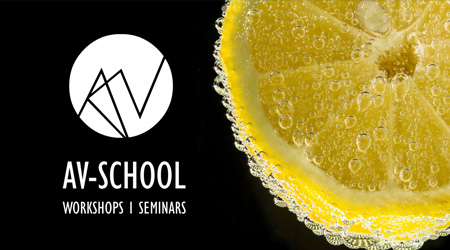Visual Fiction, Organization & Visualization of Screenplay
Teaching Staff: Verykios Spyridon
Course Code: VIS732
Course Category: Specific Background
Course Type: Elective
Course Level: Undergraduate
Course Language: Greek
Delivery method: Lectures
Semester: 7th
ECTS: 7
Teaching Units: 4
Teaching Hours: 4
E Class Page: https://opencourses.ionio.gr/courses/DAVA231/
Teaching Structure:
| Activity | Semester Workload |
|---|---|
| Lectures | 26 |
| Lab Lectures | 26 |
| Literature Study and Analysis | 80 |
| Practice and Preparation | 43 |
| Course Total (ECTS: 7) | 175 |
Recquired / Recommended : Συνέντευξη/Interview - Portfolio
Visual Storytelling, Screenplay Composition & Visualization aims at students who are oriented towards a career in the field of applied audiovisual narration. The course focuses on teaching principles of writing and visualizing of a script. During the course, the theoretical approaches of drama are developed alongside the narrative and structural possibilities of the moving image. There is extensive reference to issues relating to the creation of a visual story, such as visual space, movement, narrative rhythm and the relationship of script and visual structure.
The main objective of this course is to familiarize students with the theoretical and practical tools used for developing a screenplay into a visual structured medium. Specifically, during the course students are trained to apply aesthetic and composition principles, which are taught during the Comic Illustration course, exclusively for the creation of visual narratives (video, cinema, 3d animations). The ability of students to transcribe their ideas into a distinctive visual form is cultivated through a series of lectures and exercises.
1st Week:
- Definitions
- Screenplay format
- Types of Narratives
- Fundamentals of Story Structure
-
- Basic Structural elements of a Visual Story
- Composition: Unity and Contrast
- Optical Structure
2nd Week:
- Definition of Drama
- Action as the basic organizing element of a story
- Unity of Action
-
- Types of Space
- Flat Space and Depth Space
- The formal characteristics of Flat and Depth Space
- Dramatic qualities of Flat and Depth Space
3rd Week:
- Myth and Character
- Myth elements
- Mythic Structure
- Character and Myth
-
- Limited and Ambivalent Space
- The formal elements of the Limited and Ambivalent Space
- Dramatic qualities of the Limited and Ambivalent Space
4th Week:
- Joseph Campbell / Introduction to the psychoanalytic approach on story
- Monomyth and the Hero's Journey
- Character Archetypes
- The Mythic Journey
-
- Line, Edge and Axis / Linear patterns and compositional possibilities
- Shape
- Unity and Contrast of Line and Shape
5th Week:
- Lajos Egri / Introduction to modern narrative theories
- Premise
- Criticism of the Aristotelian narrative model
- Character and Myth
- Dramatic Conflict
-
- Tone and Tone Scales
- Unity and contrast of Tone gradients
- Methods of organizing Tone values
6th Week:
- The function of Character in drama
- Character structure
- Character and the dramatic objective
-
- Light and Color
- Color scales
- Methods of organizing Color
- Unity and Contrast of Color scales
7th Week:
- Definition of Conflict
- Types of Conflict
- The functions of Dramatic Conflict
- Conflict, Character and Myth
- Conflict and dramatic structure
-
- Movement
- Graphical representation of Movement
- Simple and Complicated Movement
- Motion and Camera
8th Week:
- Dramatic composition
- The Three Act Structure
- The anatomy of the Three Act Structure
- Arrangement of Myth within the Three Act Structure
-
- Movement / Unity and Contrast
- Motion and narrative continuity
9th Week:
- The methodology of writing a scene
- The structural elements of a scene
-
- Rhythm / Definition
- Rhythm / Unity and Contrast
10th Week:
- The hierarchy of information in relation to Character and Viewer
- The main Dramatic Question
- Secondary dramatic questions
-
- Methods of transforming and dividing the Frame
- Subdivisions of a Frame
11th Week:
- Graphical organization of a script
- Structure of visual elements in relation to the script structure
12th: Revision exercises
- Revision exercises aimed at consolidating the principles that were taught during
the semester
13th Week:
- Revision exercises aimed at consolidating the principles that were taught during
the semester
Aristotle's Poetics , Kedros Editions 2004
Aristotle's Poetics, Kaktos Editions 2002
Michael Tierno, Aristotle's Poetics for Screenwriters, Hyperion Editions 2002
Robert Mc Kee, Story, Methuen Editions 1997
Syd Field, Screenwriting, Ebury Press Editions 2003
Linda Seger, Making a Good Script Great, Samuel French Editions 1994
Bruce Block, The Visual Story: Creating the Visual Structure of Film, TV and Digital Media, Focal Press Editions, Μassachusetts 2007
Steven D. Katz, Film Directing Shot by Shot: Visualizing from Concept to Screen, Michael Wiese Editions / Studio City 1991
The course aims to familiarize students with the theories and techniques of script writing. The course is organized on a series of lectures and exercises, during which the elements of dramaand visual storytelling are presented and embellished. During the lectures, the theoretical elements are presented in connection with extracts from comics and films. Emphasis is placed on the analysis of their morphic systems. Students are asked to handle specific orginizing strategies in the framework of hierarchical exercises. Particular emphasis is given to developing students' critical ability to decode the structure and organizational elements of cinematographic films.
Provision of multimedia material. Support of learning process through the e-class electronic platform.
Enhanced by multimedia content.
The learning process is supported by the asyncrhonous e-learning platform e-class.
An evaluation questionnaire is filled and submitted anonymously by the students.
During the exams students submit artwork files that they carried out during the semester.
The evaluation of their work is based on quantitative and qualitative assessment in relation to the principles taught during the semester.
Back



 Visual Fiction, Organization & Visualization of Screenplay
Visual Fiction, Organization & Visualization of Screenplay







